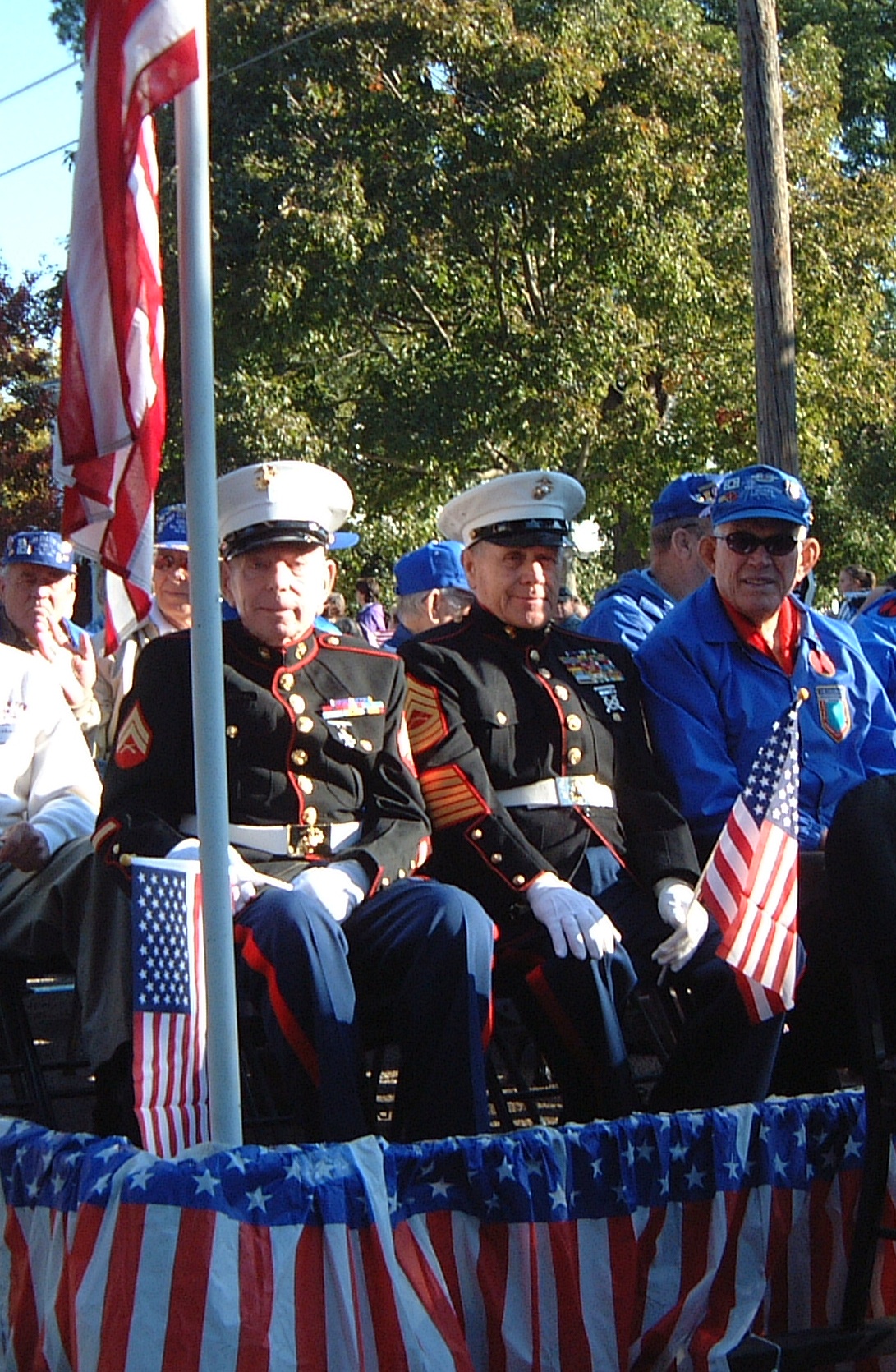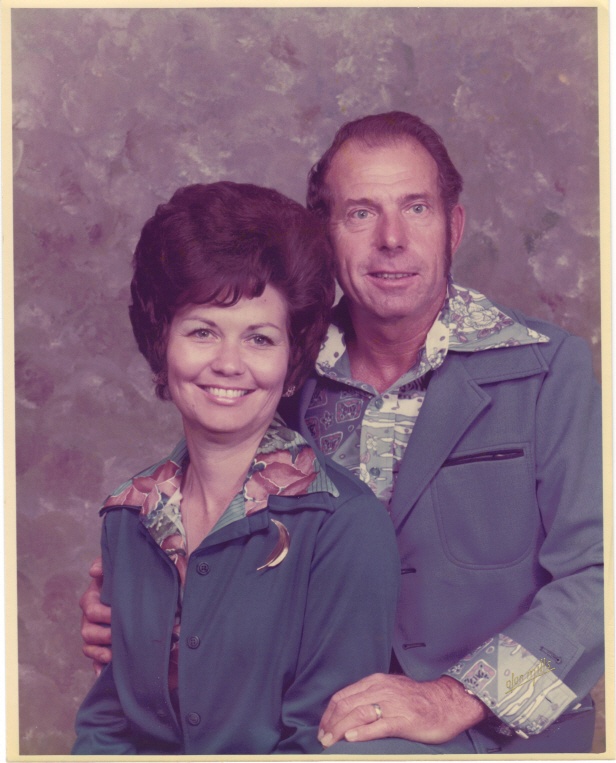|


Ernest Edward "Eddie" Doyal
October 14, 1926-December 24, 2008



He will not be forgotten!

Service
His service was held
Wednesday, December 31, 2008
01:00 PM
DFW National Cemetery in Grand Prairie, TX
(address is a Dallas address)
Dallas-Fort
Worth
National Cemetery
2000 Mountain Creek Parkway
Dallas, TX 75211
Phone: (214) 467- 3374
The cemetery has a computerized
grave locator in the first shelter.
In lieu of flowers, Memorial
Donations in his name can be made to:
Marine Corps League
(Marines Helping Marines no longer has a
separate website)
https://www.mclnational.org/

In the comments section, you can indicate that
it is a Memorial Donation for Eddie Doyal

|
Beloved
husband, father, friend...Eddie was
often the sunshine in the lives of
others with his beautiful smile, warm,
friendly personality, and sparkling blue
eyes.
|
Eddie
Doyal...
 Retired
letter
carrier and member of NALC Local #226 Retired
letter
carrier and member of NALC Local #226
 A
Marine, who served in the Korean War First
Marine Division, at the Chosin Reservoir A
Marine, who served in the Korean War First
Marine Division, at the Chosin Reservoir
 Member
of
the Chosin Few Member
of
the Chosin Few
 Member
of
the Marine Corps League Mineola Detachment
1278 Member
of
the Marine Corps League Mineola Detachment
1278
 Born
October
14, 1926, in Gould, OK to Clarence Doyal, and
Cecile Stinchcomb Doyal Born
October
14, 1926, in Gould, OK to Clarence Doyal, and
Cecile Stinchcomb Doyal

To read the article
about Ernest E. Doyal getting wounded in Korea,
originally run in the Fort Worth Press March 21,
1951, then re-printed in the Chosin Few News
Digest March/April 1997,
Click here
(PDF format, should print okay with most
computers.)
To save to your PC
instead, right click and choose "save target as"
Here is an article written by Ed Miller of the
Chosin Few:
-------------------------------------------------------------------------------------------------------------
Ed Miller Remembers Eddie
Doyal
The following information was
provided by Ed Miller who served in Korea
with Ernest ‘Eddie’ Doyal.
Eddie and I joined the ‘C’
Battery Marine reserve group in Texarkana,
Texas
in 1948. On July 27, 1950, the unit was
activated due to the North Korean Army invasion
of South Korea.
We left Texarkana
by train and joined up with the reserve unit in
Fort Worth on our
way to Korea
with short transition stops in Camp Pendleton, California and Japan.
We made the Inchon/Seoul landing on September
15, 1950. The Marines advanced through Seoul and other parts of
South Korea
and almost totally destroyed the North Korean
Army who had only months before invaded South Korea.
At that time, we thought we would be home for
Christmas. The Army continued their ground
assault north, while the Marines returned to
Wonson by motorized vehicles and boarded LSTs
for a trip around Korea
to Hungnam
Harbor, North Korea.
There, we were issued cold weather gear which
later became totally inadequate for the coldest
winter in the history of the mountains in North Korea.
From Hungnam,
the Marines continued North along narrow
mountain roads to Udamni, which was just south
of the Yalue river and not far from Manchuri.
This was the Chosin(Chaingin) Reservoir area,
which the Marines named the Frozen Chosin. In this area, in late
November 1950, we encountered the Chinese Army
which had arrived to support North Korea.
During our time in Korea, Eddie
and I found ourselves in many foxholes together,
both in North and South Korea. We were part of the
security unit that guarded and protected the 155
Howitzers (the “big” guns). I specifically
remember sharing Thanksgiving dinner November,
1950, with Eddie. I
remember our being served a hot meal that had
been delivered by air, but
it froze before we could eat it. We laughed and agreed
that it was still better than ‘C’ rations, even
though it was frozen.
Shortly after Thanksgiving,
120,000 Chinese crossed the North Korean border. After Eddie was
transferred to the infantry, I lost contact with
him. I understand he received two purple hearts,
was wounded severely, and was sent back to the
states for rehabilitation.
Many years later, I received a telephone
call from Eddie that re-established our
friendship, and we continued those many
telephone calls through these later years until
he was unable to communicate effectively due to
his illness.
Whatever we were in that
frozen long-ago and whatever we are now, we are
bound as one for life in the exclusive
fraternity of honor. The only way into our ranks
is to have paid the dues of duty, sacrifice and
valor by being there in that frozen land in the
winter of 1950-1951. The cost of joining, in
short, is beyond all earthly wealth.
YES, EDDIE PAID HIS DUES AND
WAS A CHARTER MEMBER OF THIS EXCLUSIVE
FRATERNITY OF HONOR, THE CHOSIN FEW.
Eddie Doyal was a
great Marine.

---------------------------------------------------------------------------------------------------------------------------
Also contributed by Ed Miller
is this article about the Battle of the Chosin
Reservoir:
--------------------------------------------------------------------------------------------------------------------------
Battle of
the Chosin Reservoir
On the east side of the
mountains, U.N. troops advanced north to the
Chosin (Changjin) Reservoir, some 78 miles of
twisting narrow dirt road from the coastal city
of Hungnam. There,
about 30 miles below the Yalu River,
the 1st U.S. Marine Division
(Reinforced), two battalions of the U.S. Army’s
7th Division and a force of British
Royal Marine Commandos, comprising about 15,000
men of the Tenth Corps, were surrounded by
120,000 Chinese troops.
The CCF had isolated the
trapped forces into four main groups and set up
road ;blocks all along the road.
The battle was fought in minus 30-degree
weather beginning November 27, 1950, until the
U.N. forces had fought their way through one
road block after another, reaching Hungnam
on December 11. The
Marines continued to fight, as platoons were
reduced to squads.
The tents used for sick bay
were not nearly large enough to hold the
wounded. The less
critical were heaped outside in piles and
covered with canvas and straw.
Doctors and surgeons worked in frenzy
over the wounded. Blood
plasma was frozen and could not be used. Surgeons and Navy
Hospital Corpsmen were burdened by having to
wear gloves and the morphine syringes could not
be used unless held in their mouths.
As impossible as it may seem,
the Division managed to fight its way to the
sea, bringing its dead, wounded and equipment. In this epic battle,
the 15,000 allies suffered 112,000 casualties
including more than 3,000 KIA, 6,000 WIA, plus
thousands of severe frostbite cases, while the
enemy sustained more than 45,000 casualties.
A total of 17 Medals of
Honor, 70 Navy Crosses plus many Distinguished
Service Crosses were awarded for the campaign,
the most for a single battle in U.S.
military history. Survival
of the ground troops was due in great part to
the gallant air strikes by the U.S. Navy,
Marine, and Air Force fliers under the most
adverse weather conditions.
By December 24, the Tenth Corps was
successfully evacuated to South Korea
by the U.S. Navy and U.S Air Force along with
nearly 100,000 North Korean civilian refugees.
-----------------------------------------------------------------------------------------------------------------------------
To read the New
York Times article, originally run December 11,
1950
Click here
(PDF format, should print okay with most
computers.)
To save to your PC
instead, right click and choose "save target as"
--------------------------------------------------------------------------------------------------------
More
information
Please
email andreabarnett@mail.com. If you have
any photos, or stories, or comments about Eddie
Doyal, we would be glad to have them to consider
placing here.

Maple Leaf Parade 2005, Carthage, MO
Chosin Few Float
Left to right, Eddie Doyal, Richard Gordon, John
Alumbaugh

Eddie and Eva

Eddie Doyal as a child
More photos will be added soon. Thank you
for visiting.
|